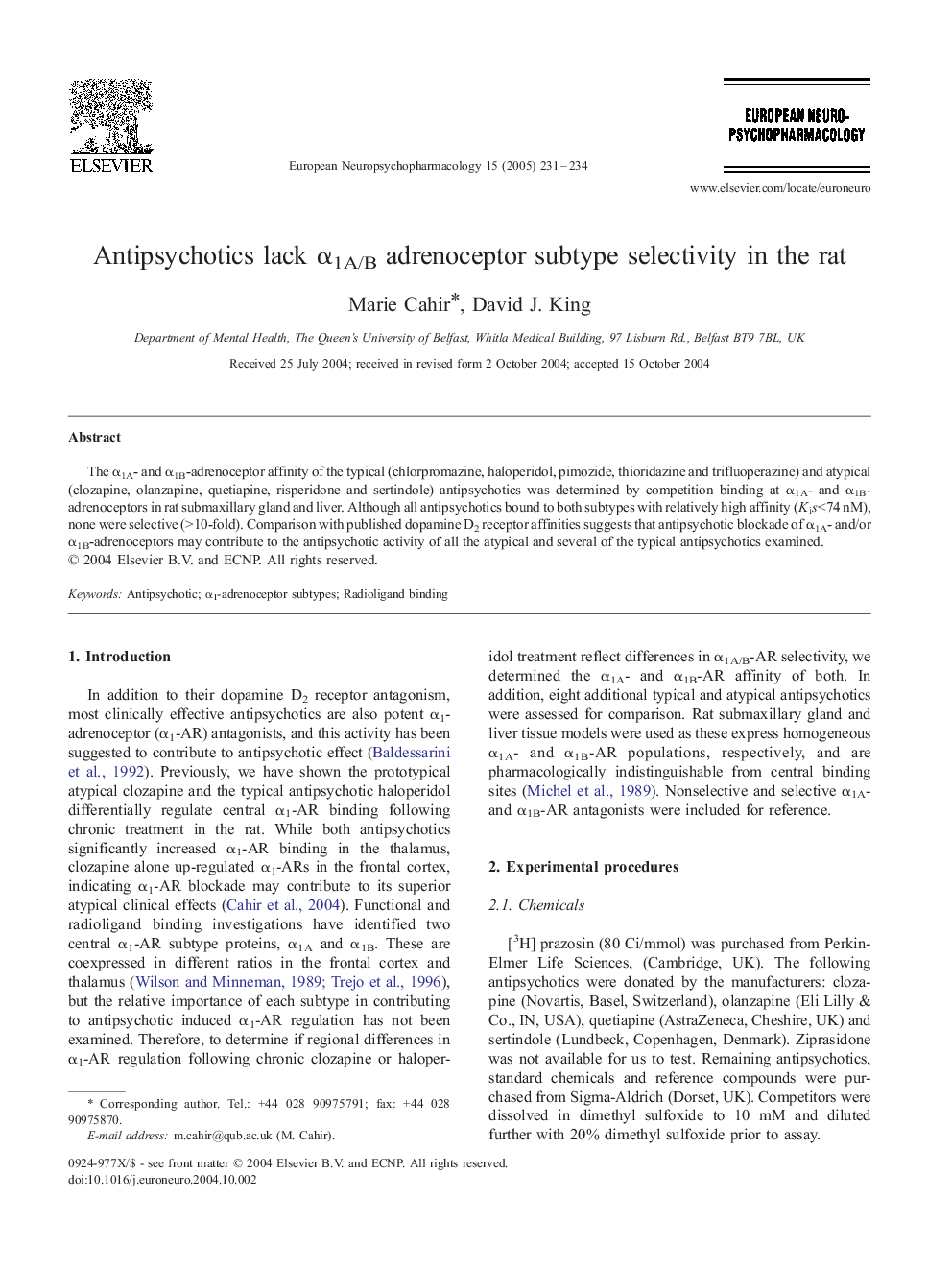| Article ID | Journal | Published Year | Pages | File Type |
|---|---|---|---|---|
| 10298860 | European Neuropsychopharmacology | 2005 | 4 Pages |
Abstract
The α1A- and α1B-adrenoceptor affinity of the typical (chlorpromazine, haloperidol, pimozide, thioridazine and trifluoperazine) and atypical (clozapine, olanzapine, quetiapine, risperidone and sertindole) antipsychotics was determined by competition binding at α1A- and α1B-adrenoceptors in rat submaxillary gland and liver. Although all antipsychotics bound to both subtypes with relatively high affinity (Kis<74 nM), none were selective (>10-fold). Comparison with published dopamine D2 receptor affinities suggests that antipsychotic blockade of α1A- and/or α1B-adrenoceptors may contribute to the antipsychotic activity of all the atypical and several of the typical antipsychotics examined.
Related Topics
Life Sciences
Neuroscience
Biological Psychiatry
Authors
Marie Cahir, David J. King,
